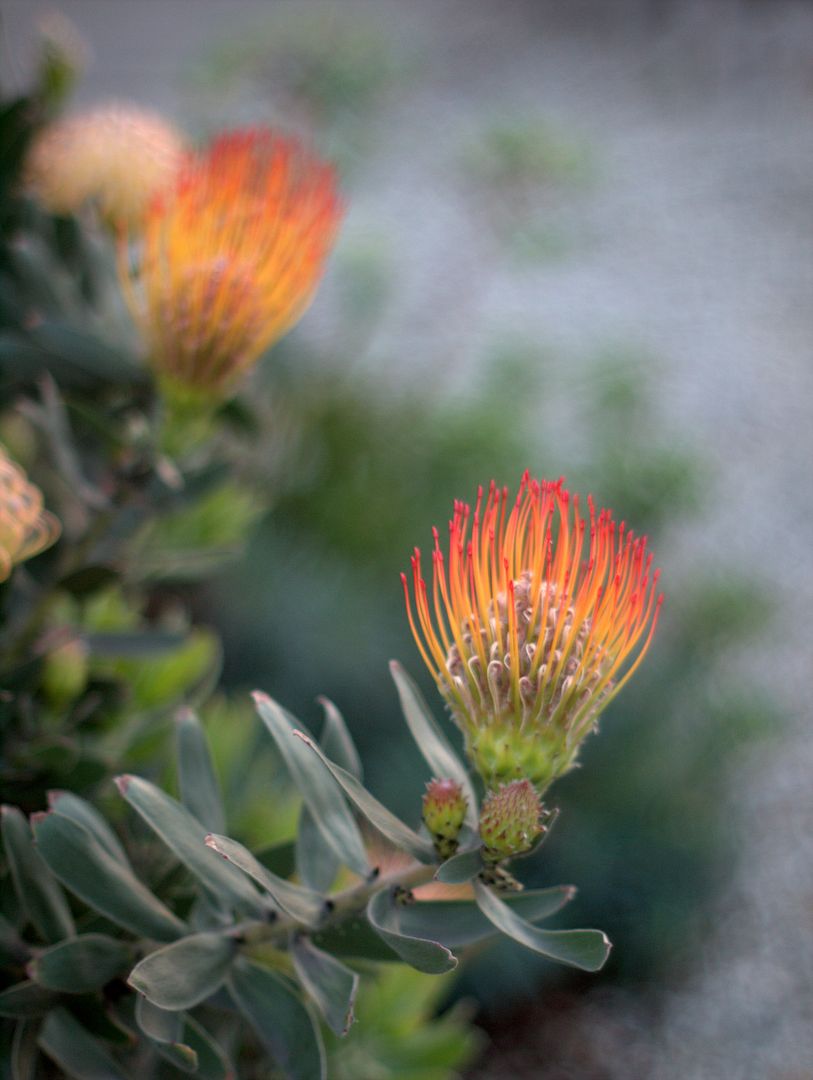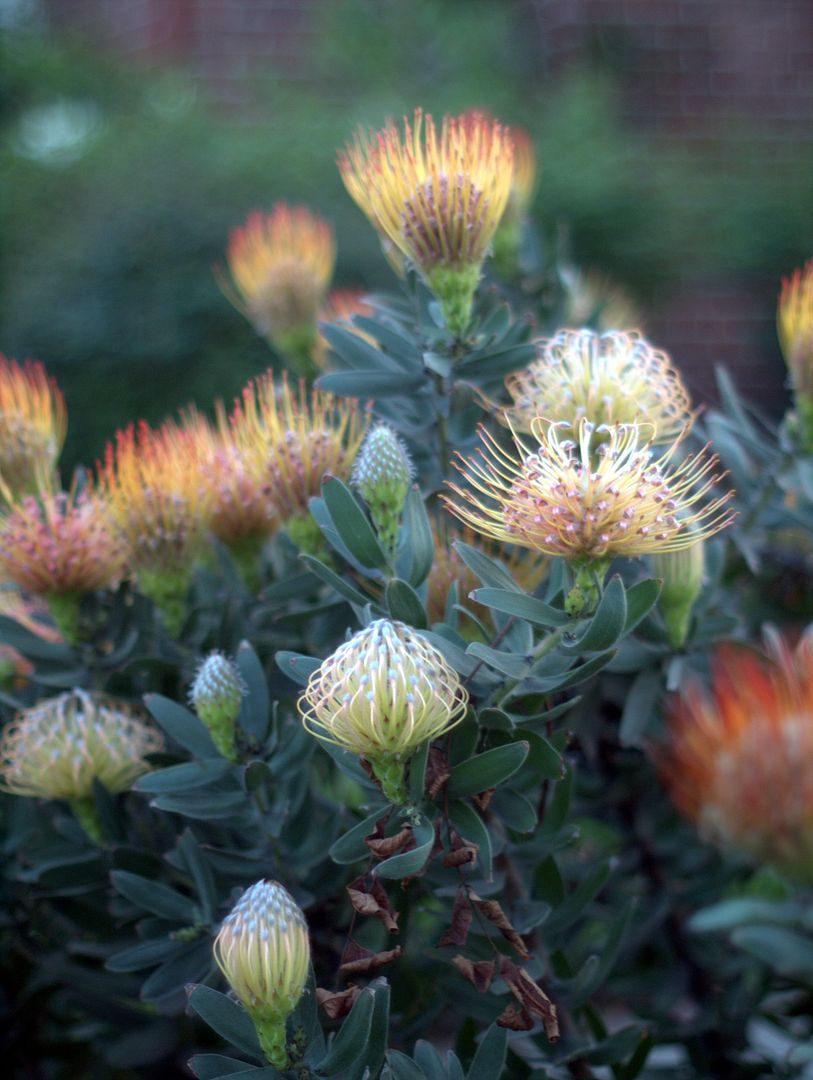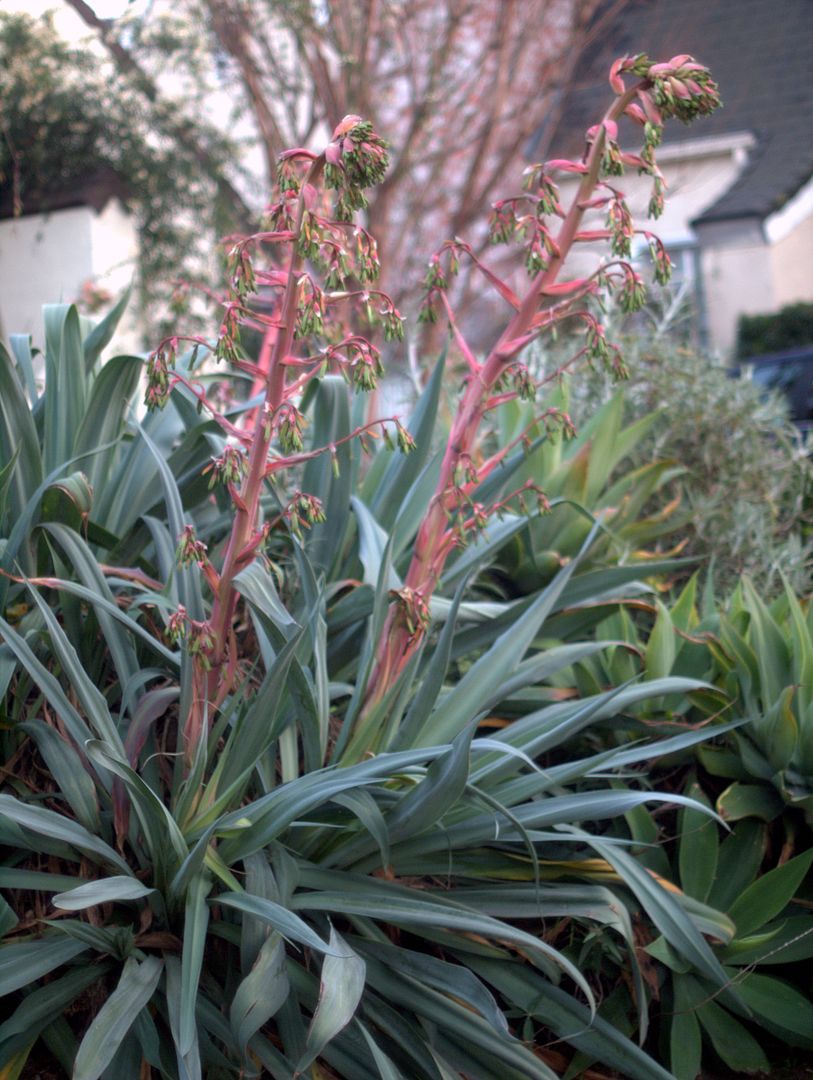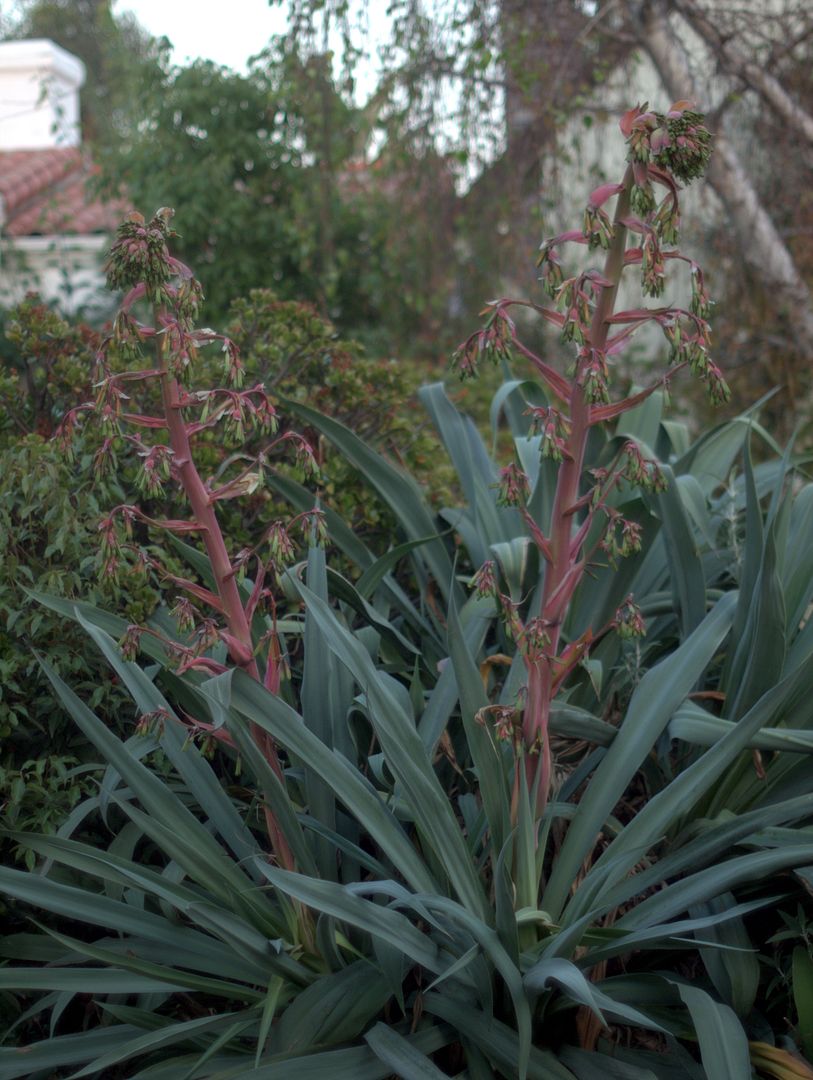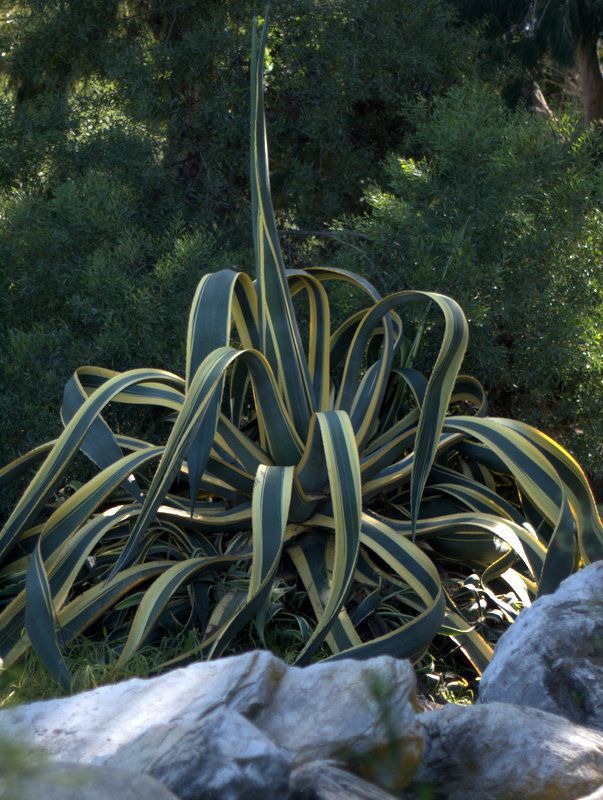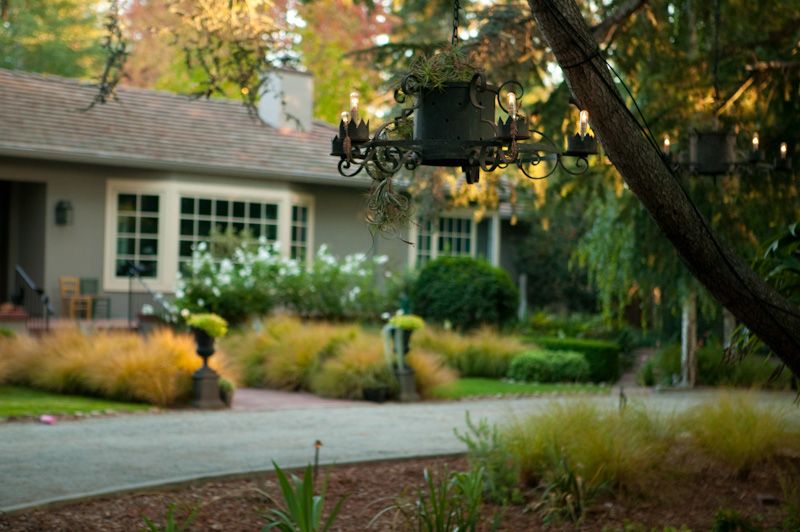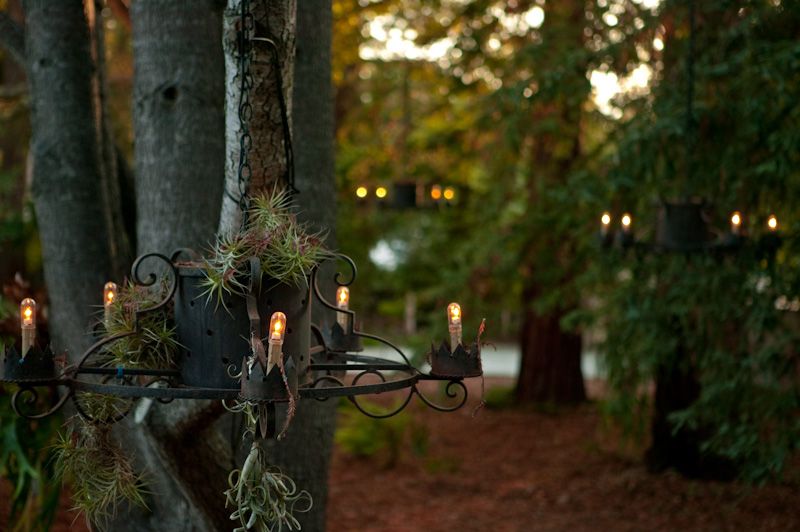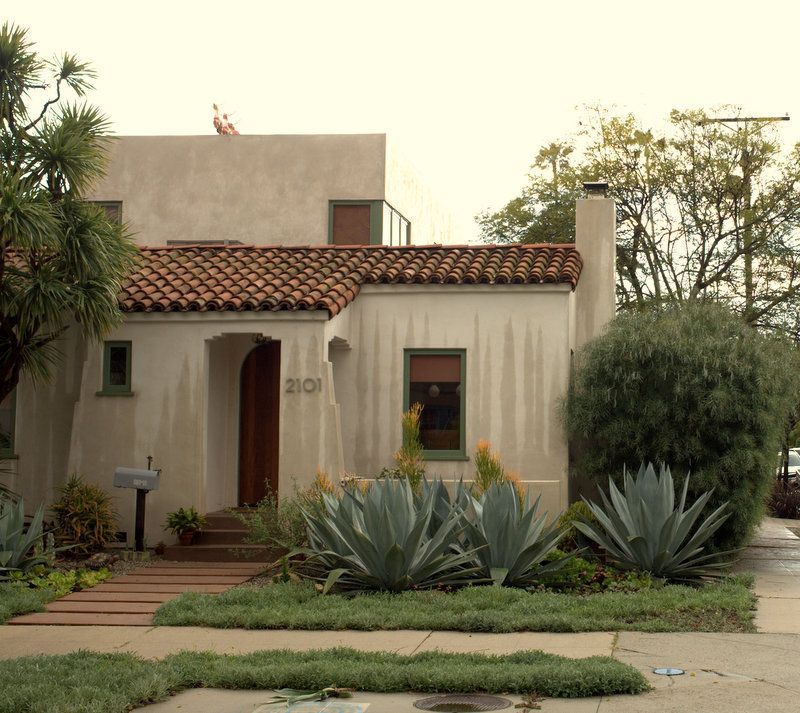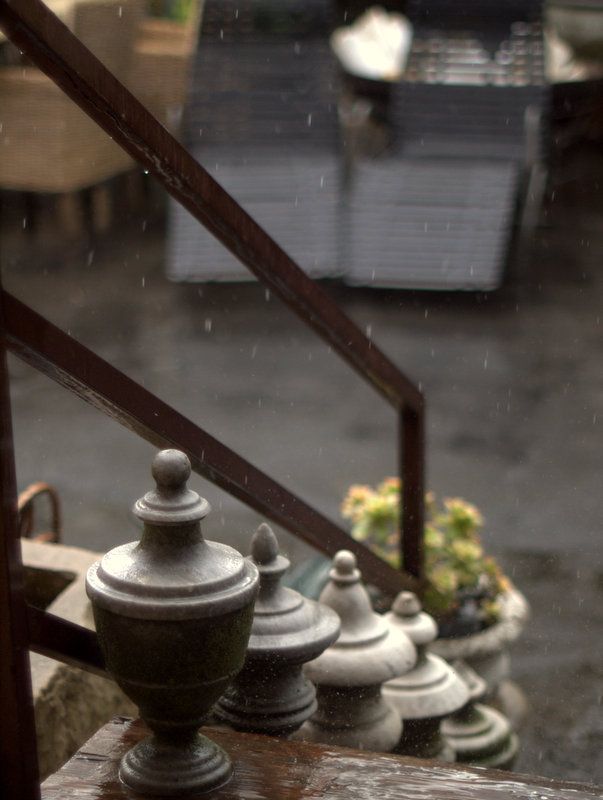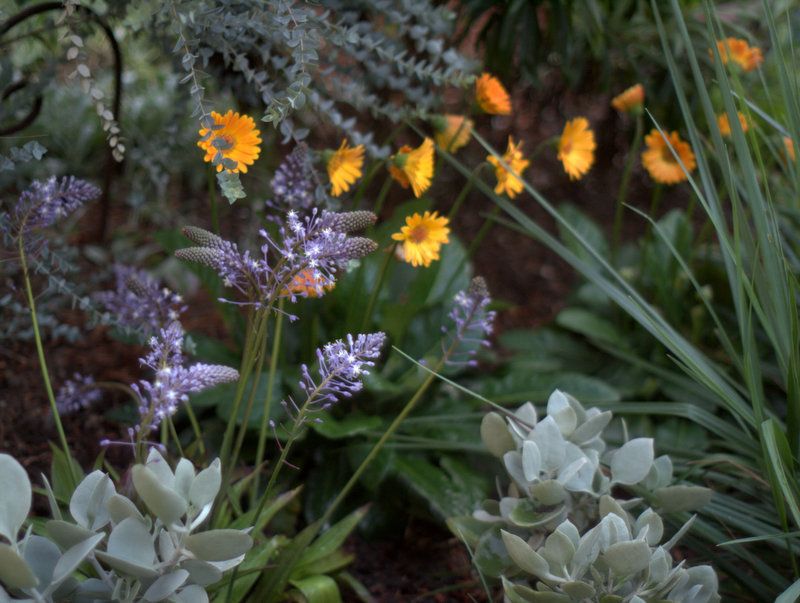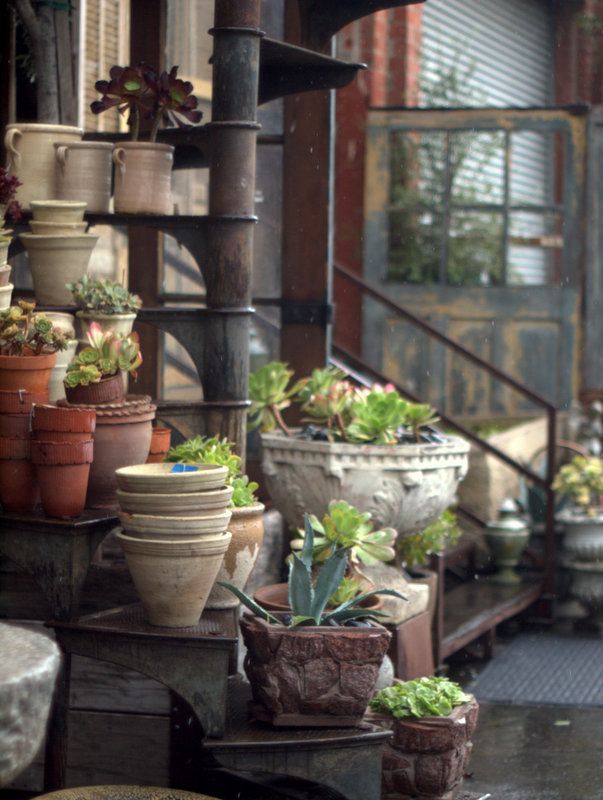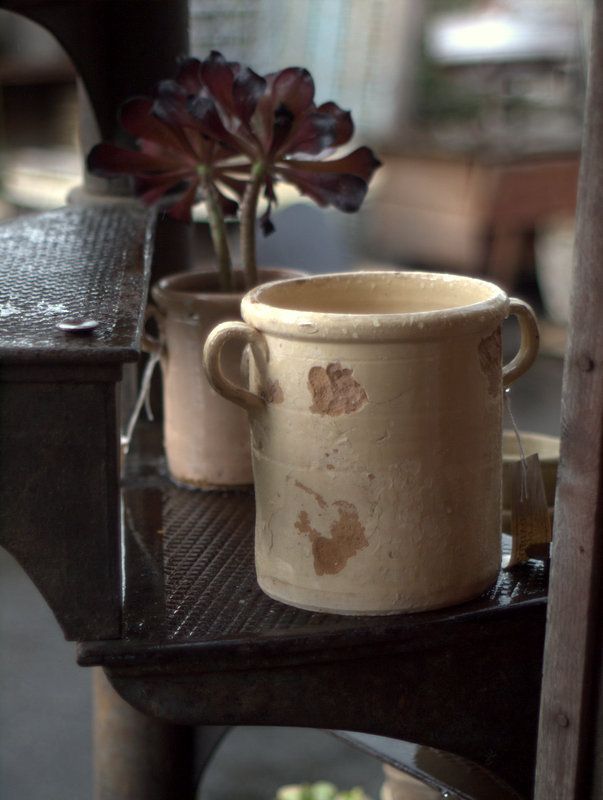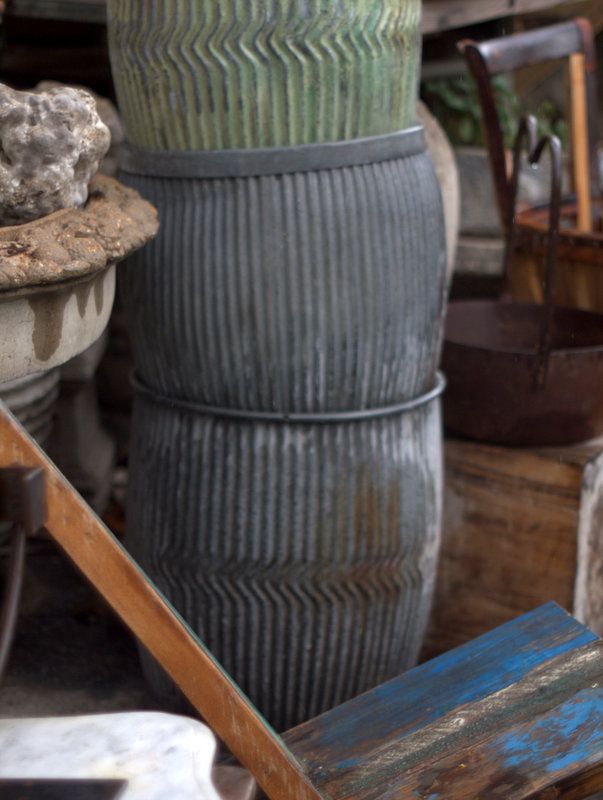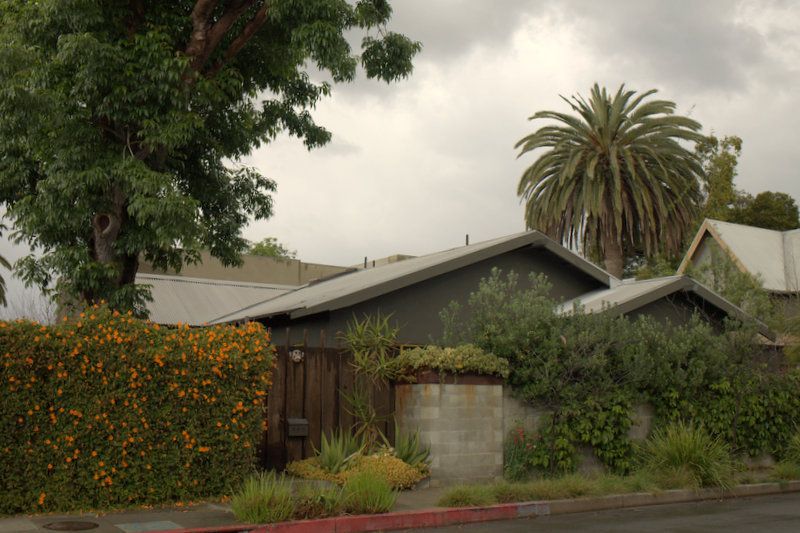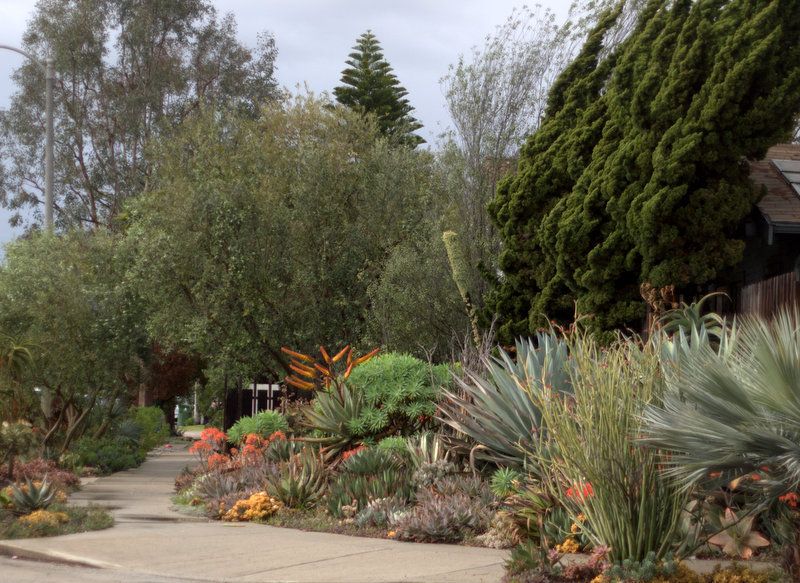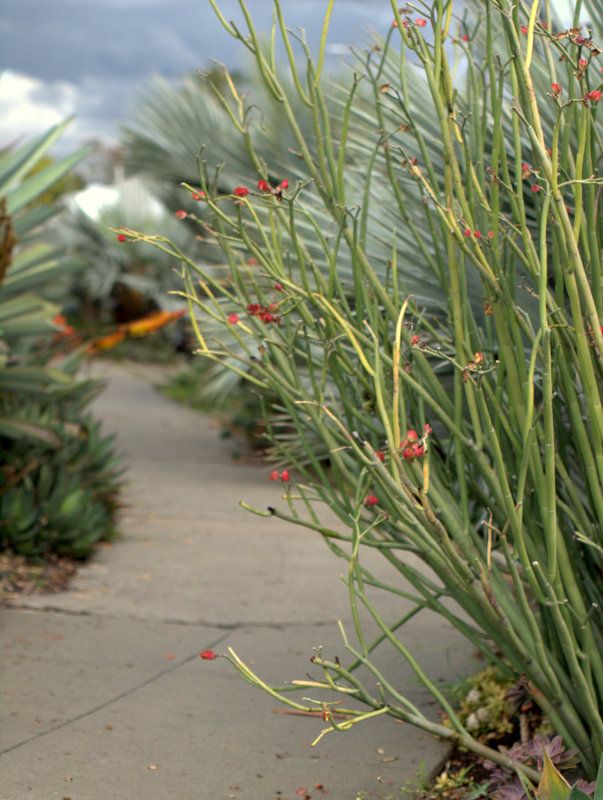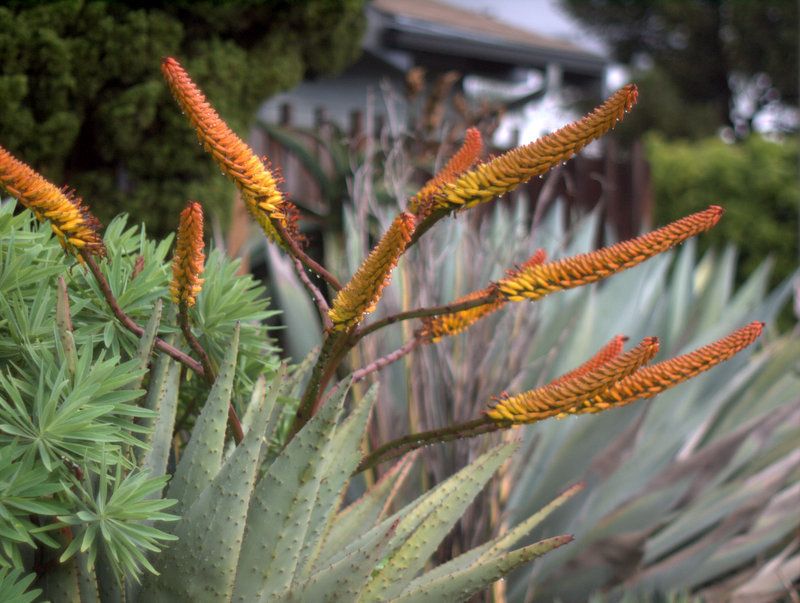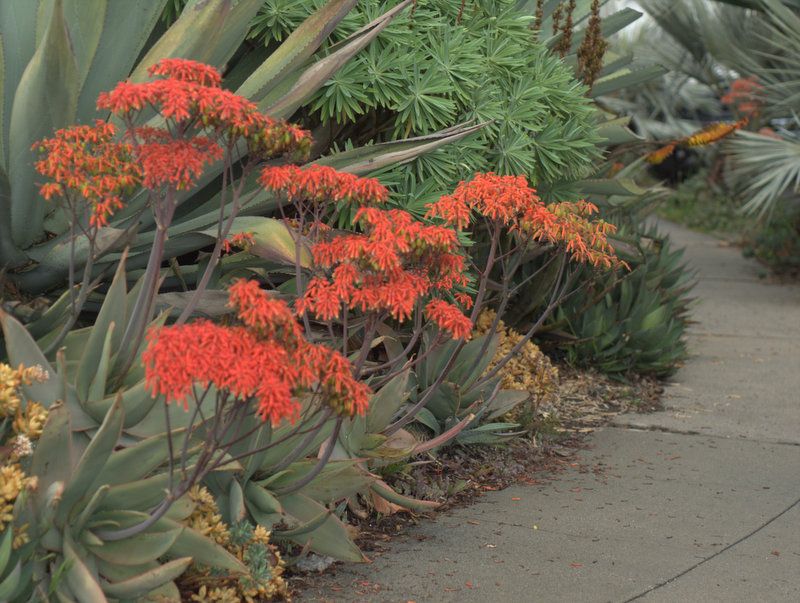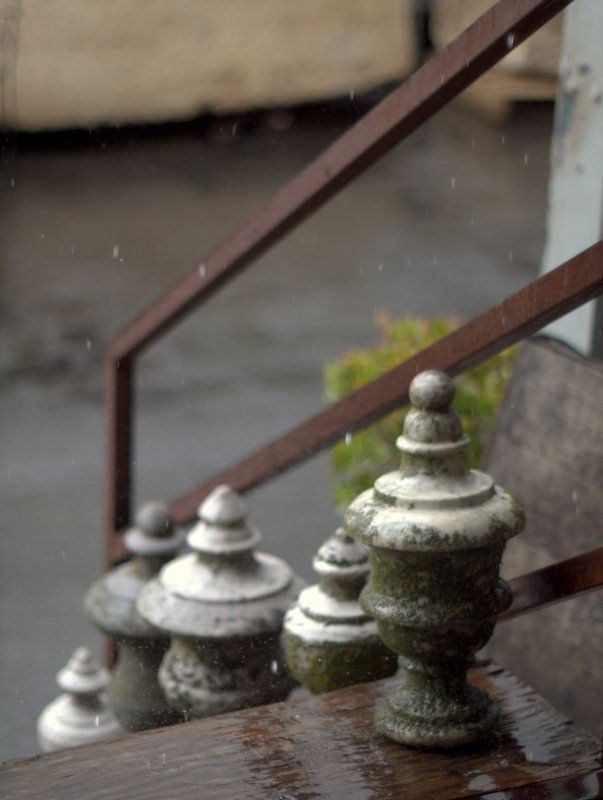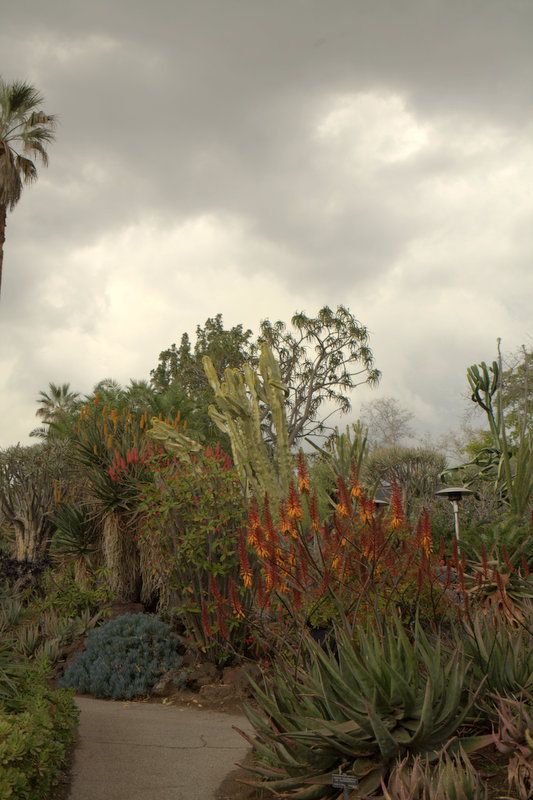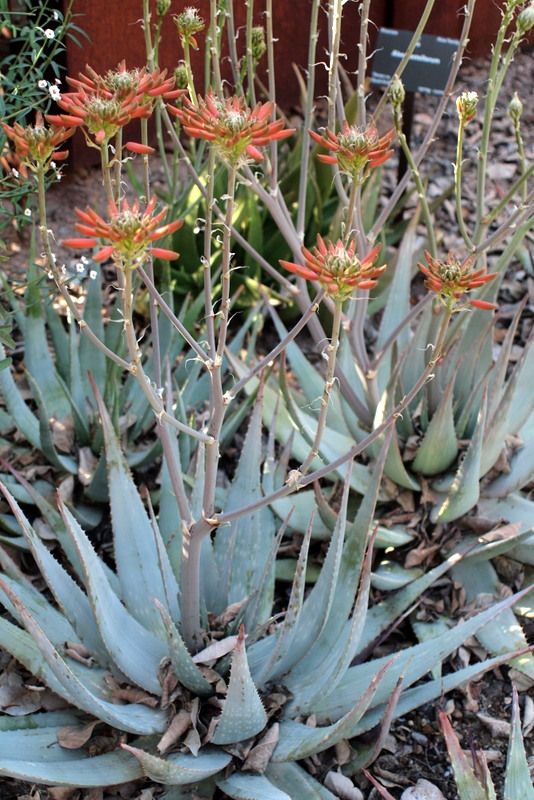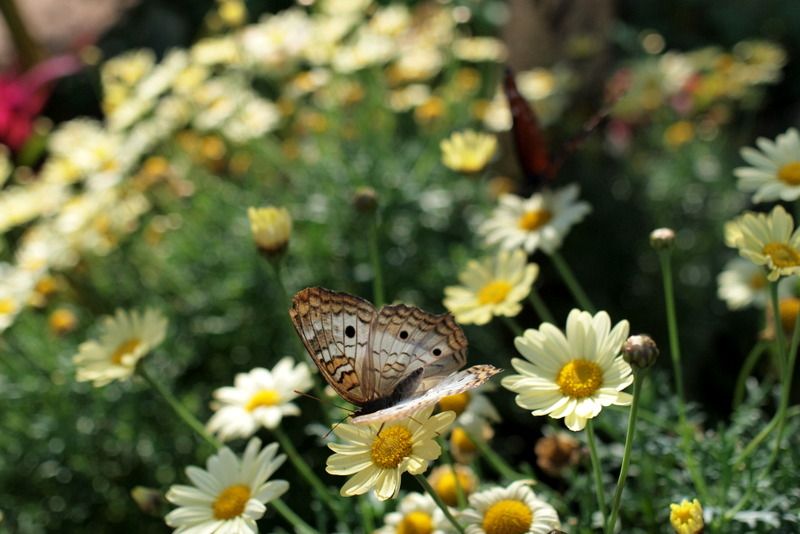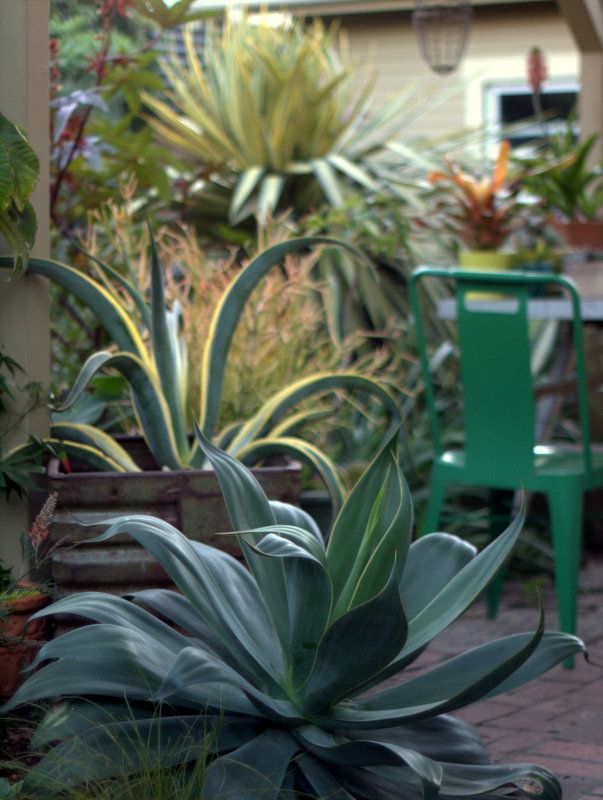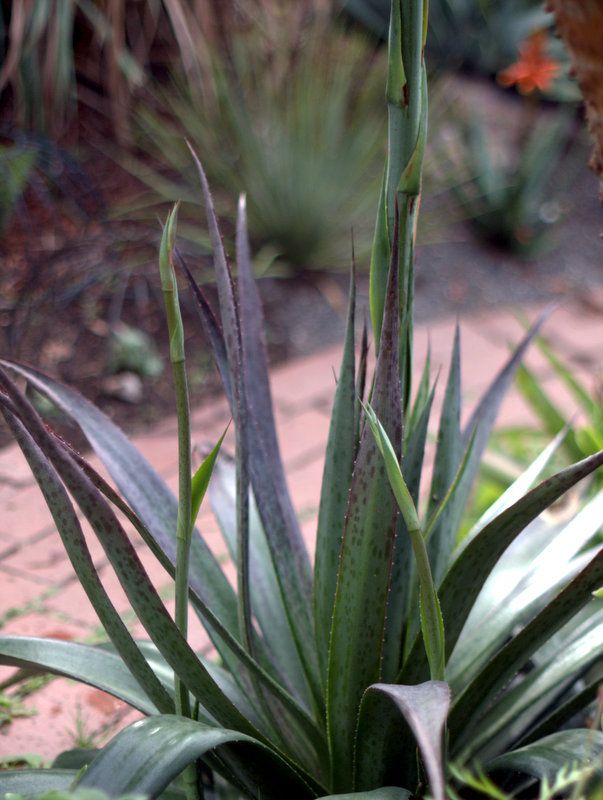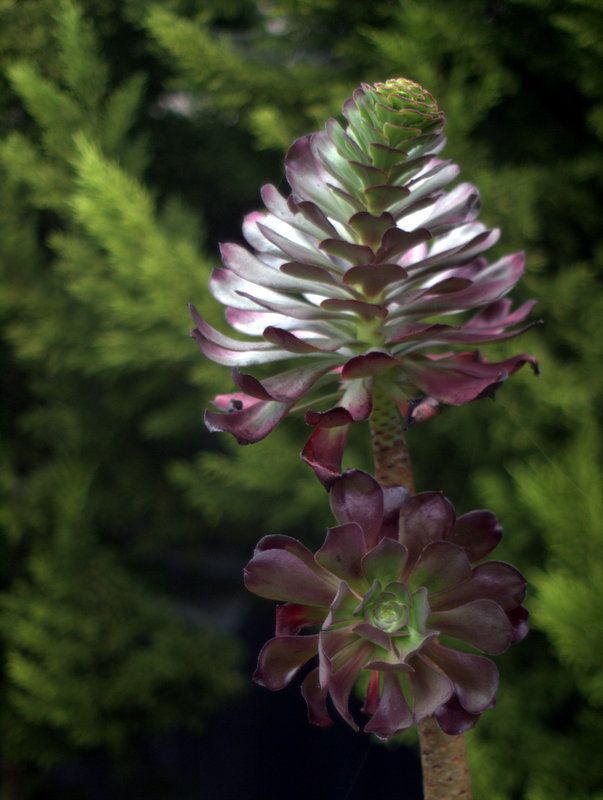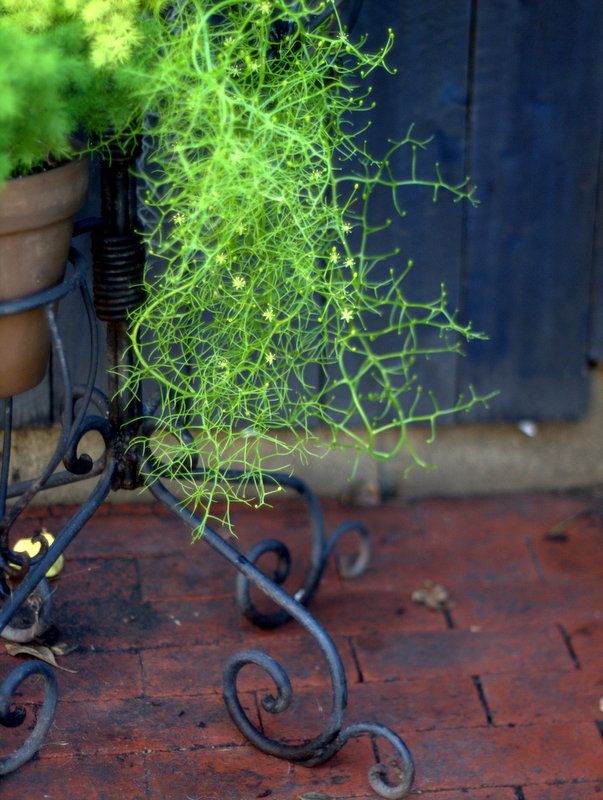Bloom Day — you know the drill.
(And if you don’t and somehow stumbled here unwittingly, just calm down and see May Dreams Gardens for some helpful background by Carol.)

I bought this Banksia ericifolia from a newish nursery in Hollywood several months ago with one bloom already fully open and several promising if smallish buds. I ain’t superstitious, but taking photos of rare, newly acquired plants in bloom just seems an invitation for a jinx on their health and longevity. So I’ve waited a few months before posting photos of these stunning bronze candles that seem made of chenille.

I bumped into the nursery while in search of some craigslist planters and failed to record its name, but it’s fairly close to Sunset Boulevard and Gardner. I should be able to find it again, since those are my old stomping grounds. I used to live basically on top of the intersection of Sunset and Gardner, about a half block away. (The best way to get into Hollywood? Follow Bette Davis’ advice, “Take Fountain!” A little local, show-biz humor…) The banksia is in a large wooden container that is in the semi-rapid process of falling apart, so it will have to be moved at some point. Gulp…beauty in peril!
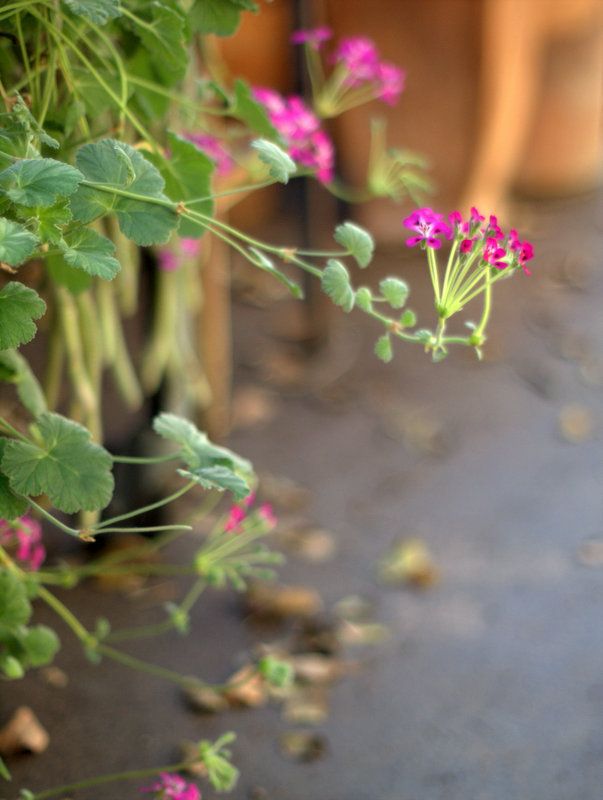
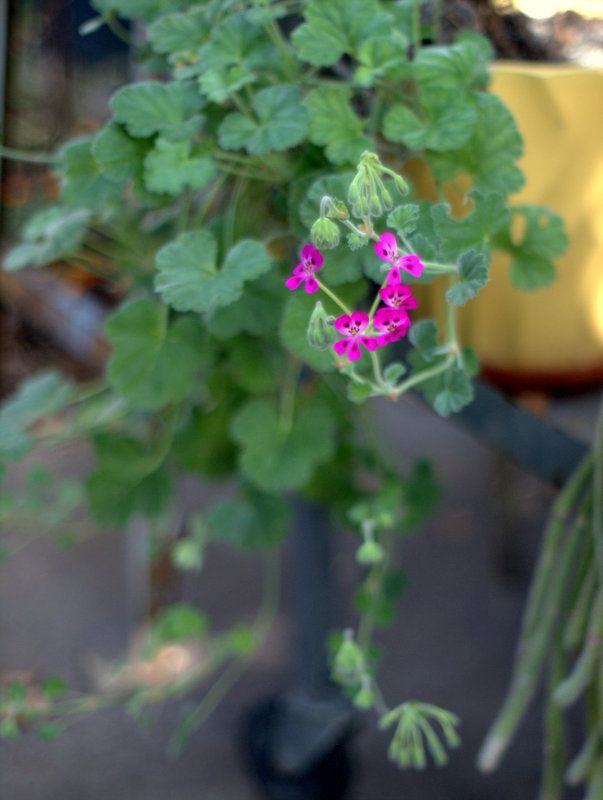
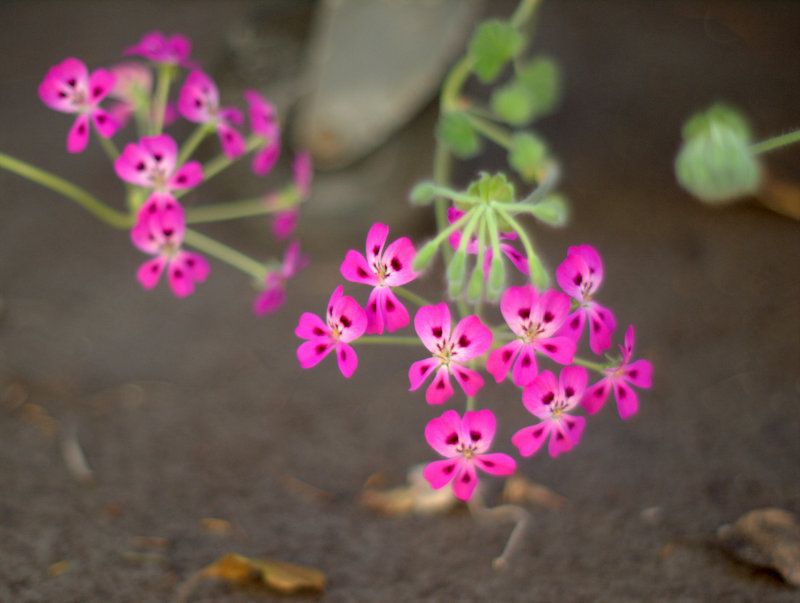
Old faithful, Pelargonium echinatum. Scalloped and felty grey-green leaves with firework bursts of flowers suspended mid-air. Looks a lot like the cultivar ‘Miss Stapleton’ which is a suspected cross of two species. Summer dormant.
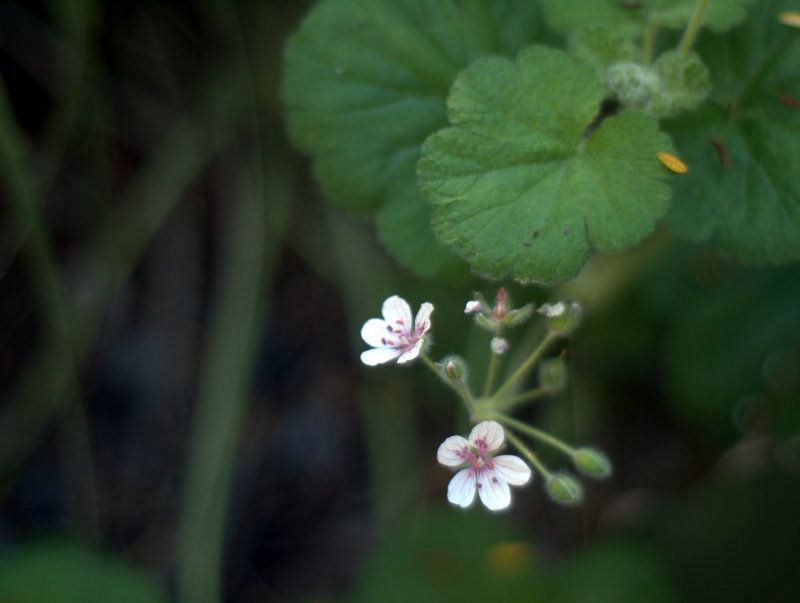
The related Erodium pelargoniflorum, a spring annual here, isn’t reseeding as extravagantly in the drought, which is fine with me.
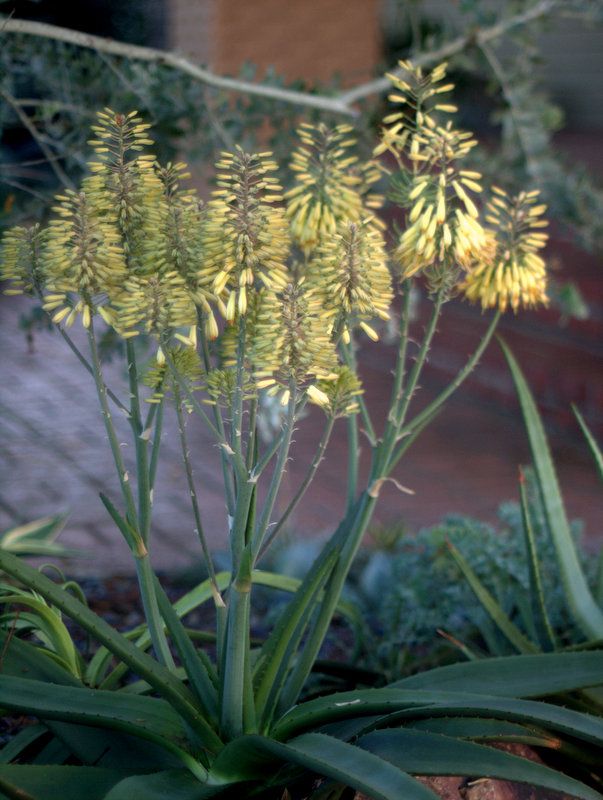
The unnamed aloe along the driveway is looking more and more like Aloe ‘Moonglow’ — which I recently bought again for the back garden, label intact. There was more peachy color to it in previous years, when it wasn’t smothered under the Acacia podalyrifolia. I limbed up the offending acacia last week and promise to try harder for a less blurry photo next time.
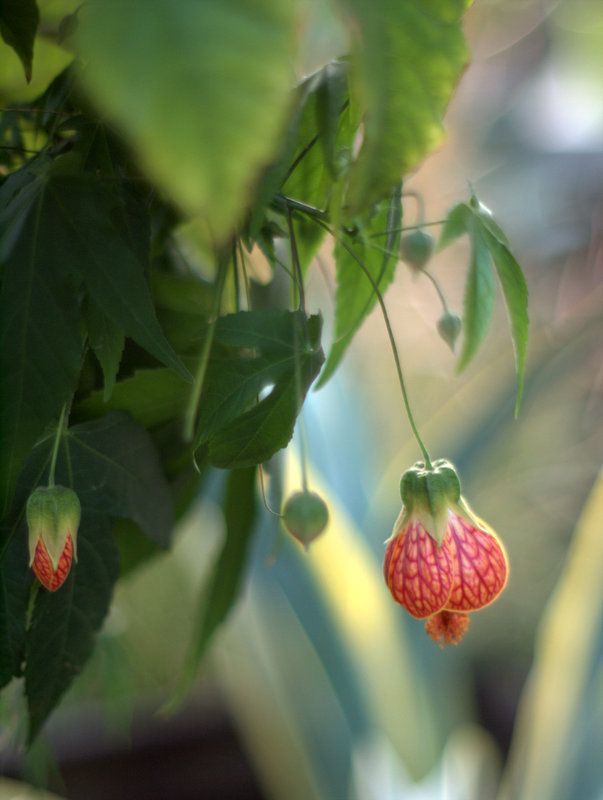
Abutilon venosum, found at Tropico in West Hollywood, crazy in bloom this February
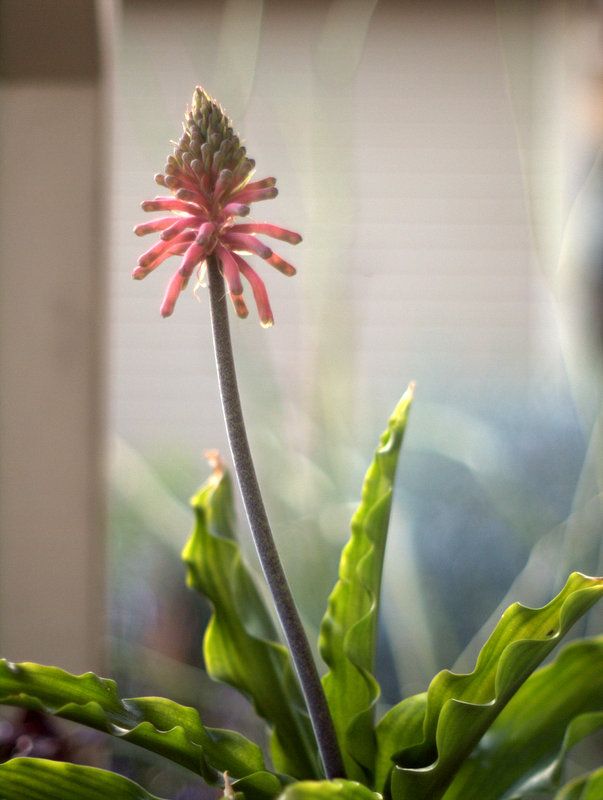
Veltheimia bracteata, a South African summer-dormant bulb. Really the easiest thing to grow, if a bit slow to bulk up and get going.
The emergence of the leaves in fall are a reminder to start watering again.
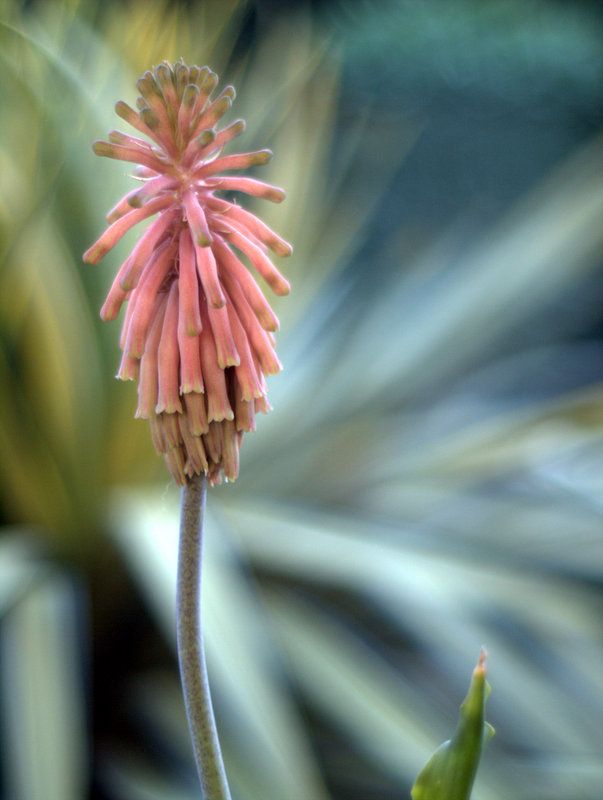
The flower today, a bit more filled out.
I find some of the summer-dormant stuff easier to deal with in containers, which is where the veltheimia has been growing for over five years. Unless I failed to record an earlier bloom, this would be its first year to flower.
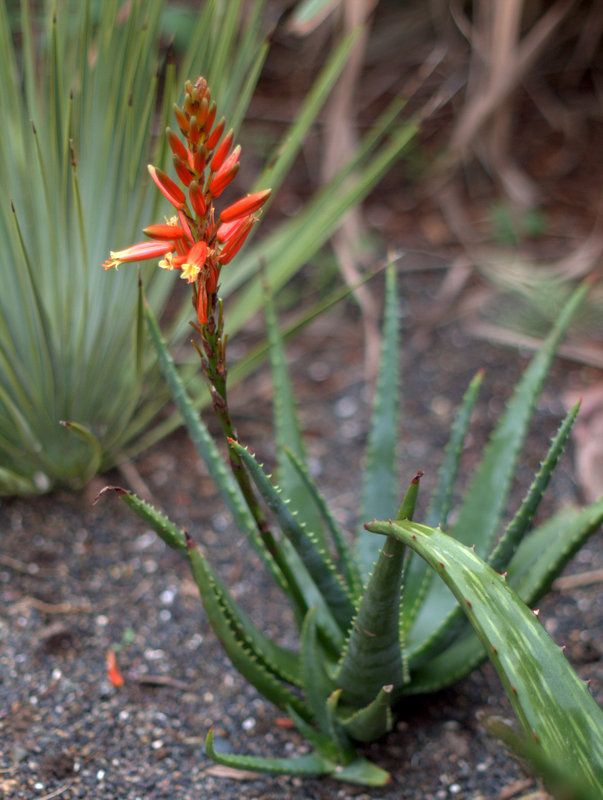
Aloe ‘Always Red.’ Seeing its first bloom, I did a photo search to double-check possible mislabeling. You call that red? Yes, apparently they do. Supposedly a ferociously long-blooming aloe.
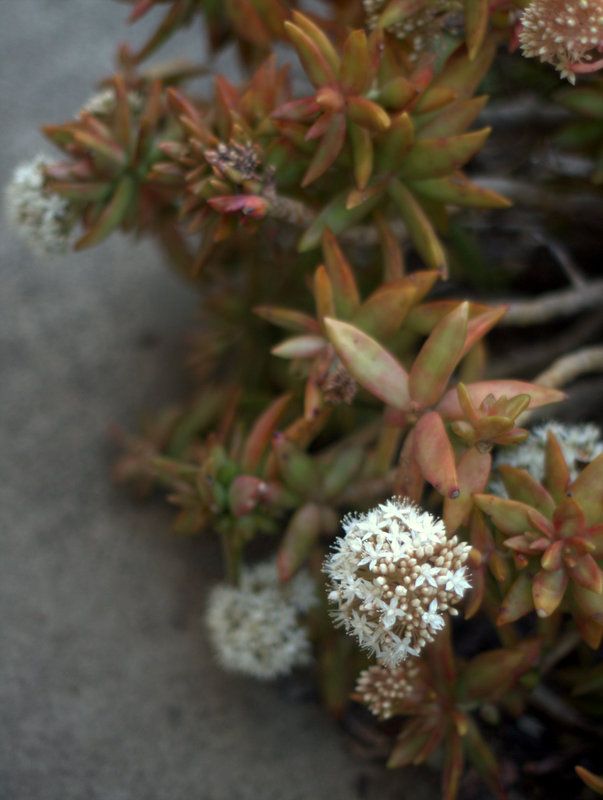
Sometimes a succulent’s flowers can be an annoyance (hello, Senecio mandraliscae), but not with Sedum nussbaumerianum, which are nice complement to the overall plant.
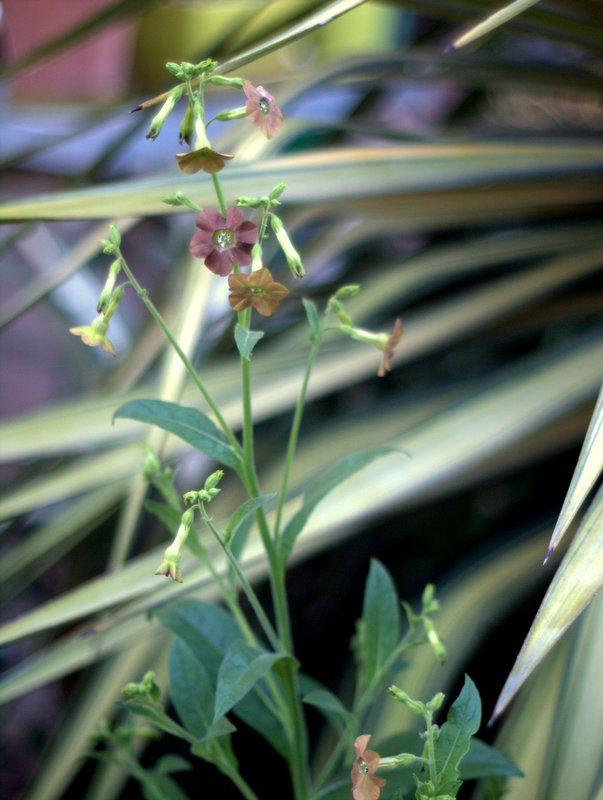
Only one plant was allowed to mature this spring from the hundreds of self-sown Nicotiana ‘Ondra’s Brown Mix’

Ah, those fleeting moments when everything is in balance, before one thing outgrows its spot and stifles another. Balance usually lasts about six months in my garden.
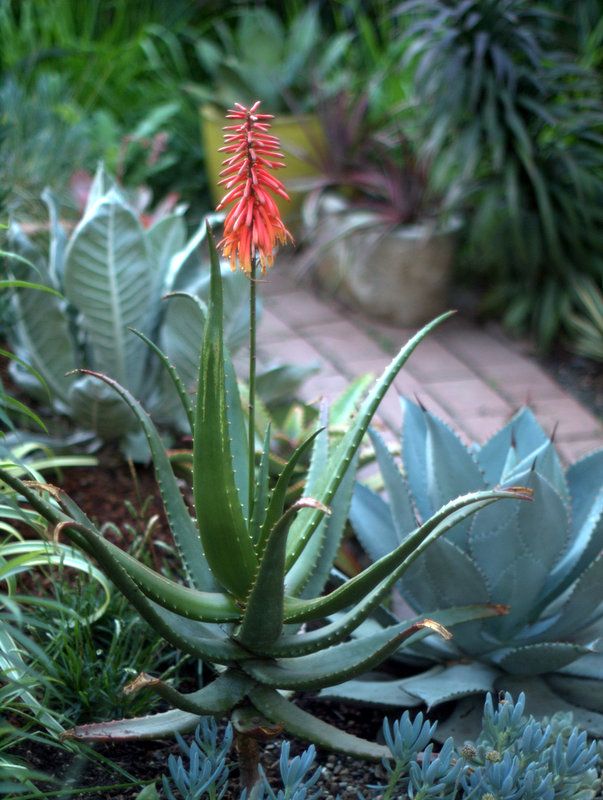
Still waiting for the deep red color to form on the leaves of Aloe cameronii. A continued regimen of full sun, dryish soil should do the trick.
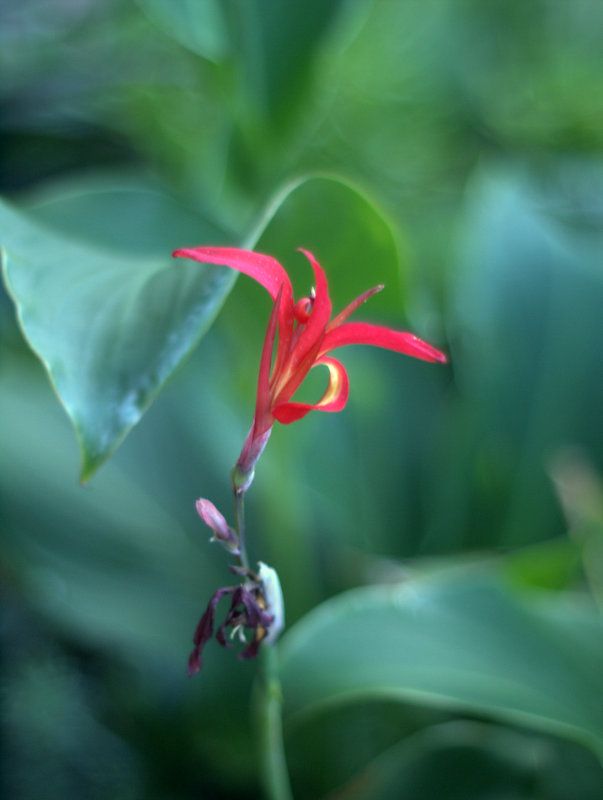
A species canna from Tropico in West Hollywood
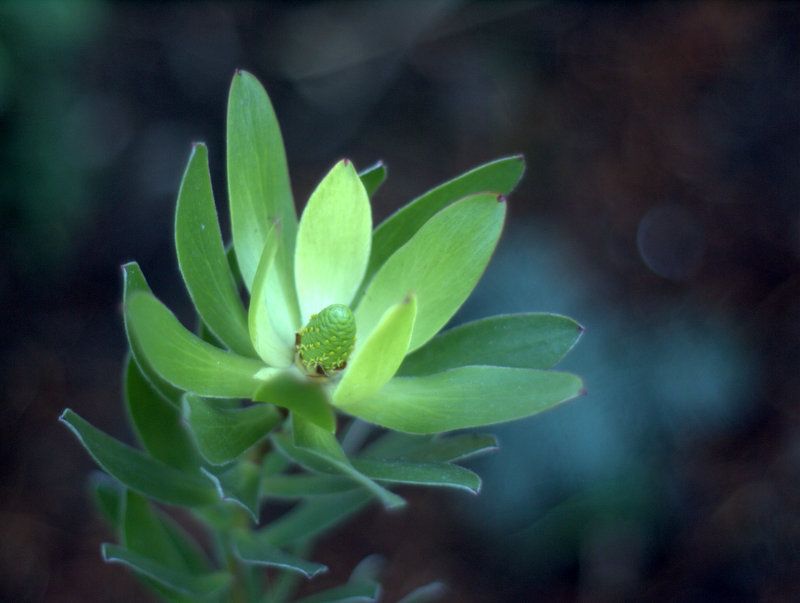
Buds forming on Leucadendron ‘Safari Goldstrike’

The ‘Little Jean’ kangaroo paws again, with phlomis, cistus, and euphorbias, self-sown poppies filling in. Maybe there’ll be poppies for March.

